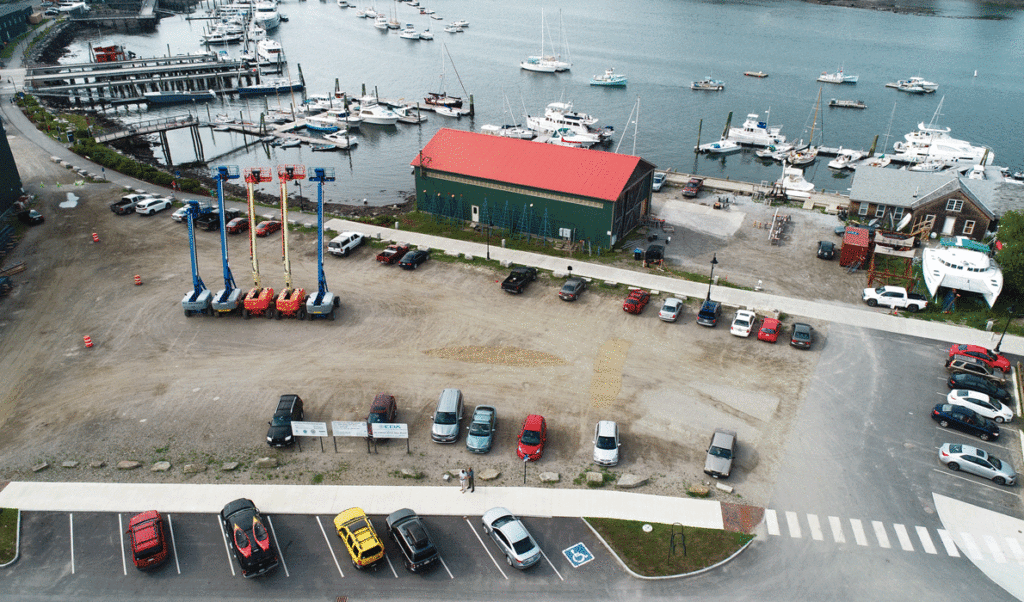Like that of most coastal towns, Belfast’s commercial waterfront is a finite stretch of real estate. Mike Hurley defines it as the shoreline that extends from the Route 1 bridge south to what is known locally as the Boathouse.
“There ain’t no more,” jokes Hurley, a city councilor and long-time downtown advocate. And that makes a small piece of land the city owns near the harbor too valuable to sell to the highest bidder.
Hurley and other councilors are developing a concept for the 28,000-square-foot parcel that could result in a miniature version of a Maine downtown, with side-by-side, two- and three-story structures. The concept has been nicknamed “Belfast Yards.”
“What’s missing on the Belfast working waterfront is small, mixed-use, privately owned business,” Hurley said.
The parcel, now a gravel lot used for parking, is anvil-shaped, he said, and has frontage on a popular paved walking trail that follows the harbor and on Front Street. For much of the 20thcentury, it was the site of a railroad building, but that structure was razed several years ago.
In recent years, Front Street—which run perpendicular to Main Street—has buzzed with activity, particularly after Front Street Shipyard built its yacht and boat service business on the site of a former sardine packing plant, and a now-popular harbor walk was established. Today, especially in the warmer months, pubs and restaurants in the area do a brisk business.
Despite the city’s successful working relationship with Front Street Shipyard, Hurley said the council does not want to allow the parcel to accommodate any more growth from the business.
“We’re not selling this to Front Street (Shipyard), and we’re not making this parking,” he asserted.
One concept that has emerged in discussions is selling narrow, individual lots along Front Street and along the harbor walk, Hurley said, while stipulating that they build two- or three-story structures that connect to adjacent buildings, just as Main Street businesses have developed.
“We want to make it look like downtown Belfast,” he said. Another point of reference is the waterfront in Provincetown, Mass., on Cape Cod, where narrow, privately owned shops abut each other.
Hurley suggested the ground floor levels of the buildings might cater to retail customers—perhaps seasonally along the walkway—and that upper floors could be used for offices and apartments. An alley could be created behind the buildings for deliveries and service access.
For many years, the city waterfront was dominated by what Hurley referred to as “kings.” At one time, most of the waterfront was owned by five businesses and individuals. Today, most of the waterfront is owned by just two businesses and one individual, he said.
The concept would give smaller businesses a stake on the waterfront, Hurley explained, because the city can legally stipulate that each building be individually owned, and not controlled by some larger entity.
“What we’re trying to accomplish is mixed-use, small-ownership, to re-colonize the Belfast waterfront from industrial,” he said.
City officials will continue to discuss the concept and seek input from engineers, real estate agents, and developers, Hurley said.





